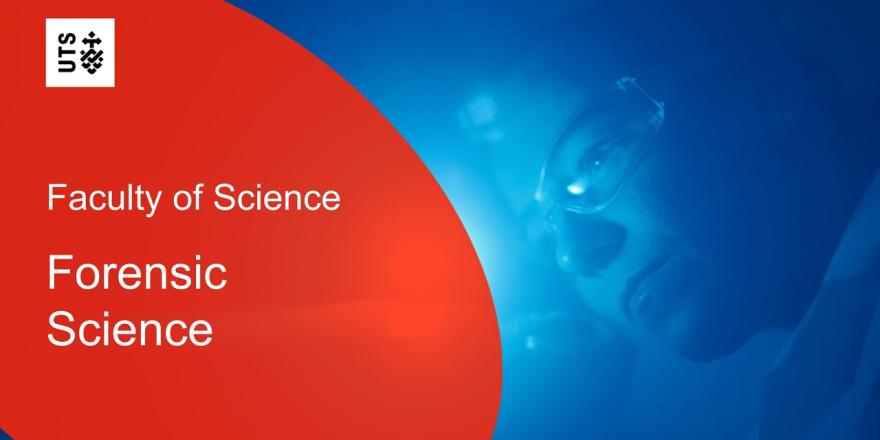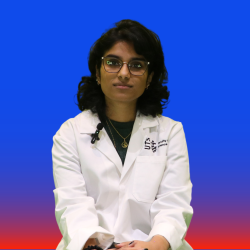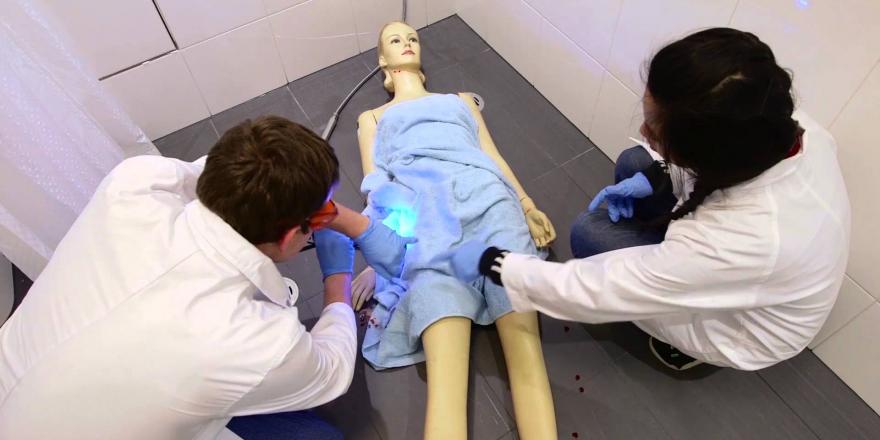Study at the intersection of science and criminal justice

Forensic Science
With a UTS Bachelor of Forensic Science, you'll build the advanced scientific and technological skills you need to detect, collect, examine and decipher traces of criminal activity and apply theory to practise in STEM, law, criminal justice and social impact.
Our Bachelor of Forensic Science was the first degree of its kind in Australia, and it’s known for producing future leaders in this specialist field of inquiry. Tailor your learning with one of four majors — Biology, Chemistry, or Crime Scene Investigation; or Digital Forensic Science, an emerging field of practice where you’ll come face-to-face with crime online — and get hands-on with the practice of forensic science in our Crime Scene Simulation Labs.
By the end of your studies, and depending on your choice of major, you’ll be ready to deliver hands-on or digital forensic science solutions in state and federal policing, criminal justice and intelligence agencies, banking and finance organisations, or in government and scientific research organisations.
SELECT A COURSE
Bachelor of Forensic Science (Biology)
Bachelor of Forensic Science (Chemistry)
COMBINED DEGREES
Choose from Business, International Studies, Sustainability & Environment, Creative Intelligence & Innovation, Engineering or Law and gain two qualifications in one when you combine your science and maths degree with another UTS degree.
Why UTS Forensic Science?

Students will have the opportunity to learn the core forensic science skills that all of our graduates possess.
And they'll also get the understanding of the I.T. area
So learning about cybersecurity, networking and programing so they can see how that can assist in the investigation of digital crime more and more, a lot of the criminal activity is moving from the physical world into the digital world.
And a big challenge for us is to try and understand how we can investigate and prevent crime from occurring in the digital world.
What I really love about digital forensics was the cybercrime aspect of it. I am equipped with the ability to identify documents that relates to identity fraud, or to be able to identify the type of malware that's in the computer. It's what I really enjoy about digital forensics.
Learn from the leaders. Work alongside leading academics and practitioners in the internationally acclaimed UTS Centre for Forensic Science, known for innovation in fingermarks, DNA and forensic intelligence research, and digital forensics among others.
Contribute new knowledge. Help build the global forensic science evidence base when you complete an original piece of research during your final year of study.
Study in purpose-built spaces. Bring your learning to life in our high-tech Crime Scene Simulation Labs where investigating crime is all in a day’s work.

"I choose to study forensics at UTS because it is known world-wide for its forensic science program and it is taught by leaders in the field. I was tossing up between forensic science and drama. I decided to pursue forensic science after seeing the practical experiences that UTS offers students."
-Sandali, Forensic science student
Lab Virtual Tour

Forensic students at UTS Science have access to a unique Crime Scene Simulation Lab. Set up like a city apartment, the lab provides students with practical experience in crime scene investigations.
[Instrumental music]
[Close up of someone in lab coat scanning pass and opening door, then close up of sign that says Crime Scene Simulation Lab.]
[Forensic student in mock dining room dusts for fingerprints; student in mock lounge room takes a photo of evidence.]
Custom designed virtual city apartment
[Three forensic students sit at bench with three computers examining photos of evidence and discussing findings.]
Training aspiring forensic scientists and crime scene investigators
[Close up of students discussing photos.]
Simulating real-life crimes
[A forensics student measures the length of a suspect’s shoe; close up of a suspect’s shoe with a tape measure next to it]
Break and enter
[The forensic student takes a photo suspect’s shoe in mock break enter crime scene.]
Suspicious circumstance
[Two forensic students in a mock bedroom remove covers from bed where a dummy body lays.]
Everyday settings where crimes typically occur
[Two forensic students in mock crime scene in dining room dust a glass for finger prints and use a blue light to examine evidence.]
Teaching fingerprint detection
[Close up of student dusting dining room table for finger prints.]
[Student rolls out yellow crime scene tape over mock bathroom crime scene while another student uses a blue light to look for evidence.]
Detecting blood hidden in crime scenes
[Second student joins one in bathroom as blue light shows mock blood in crime scene.]
[Close up to student in bedroom scene collecting evidence]
[Two students in mock study crime scene with dummy body look for evidence]
Working collaboratively
[Close up of waste bin where student finds gun and places into evidence bag.]
[Second student uses magnifying glass and takes notes.]
Developing new detection methods
[Kitchen shows mock drug lab where two students take photos and collecting evidence]
New human identification techniques
[Close up of student taking a swab of substance in glass container]
World leading forensics education
[Close up of student in mock bedroom looking at brochures and cards left on floor]
